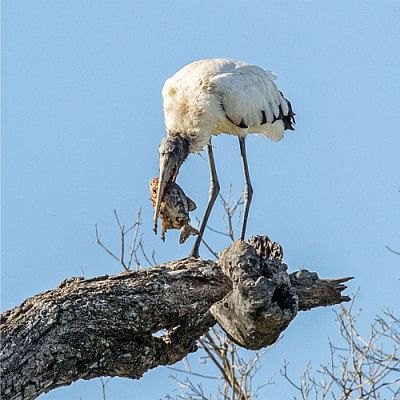Piranha

Over a century ago, in late 1913, Teddy Roosevelt went on an expedition in Brazil to navigate the mysterious and uncharted river called the River of Doubt. The hardship of the trip is unthinkable today. Roosevelt's team ran out of food and had to rely on hunting parrots and monkeys. Malarial mosquitoes tormented and sickened them. They were followed by suspicious Indians who could have attacked and killed them any time. They brought along canoes only to find they were unsuitable for the rivers they needed to travel on.
But the trip also revealed many new things to the adventurers.
Roosevelt and his colleagues, for the first time, saw an unusual fish in the river. The voracious fish had sharp teeth. One day, on the riverbank, Roosevelt's second in command, Colonel Randon, absent-mindedly put his bare foot in the water. In one bite the fish ate his little toe.
In another incident, Roosevelt witnessed a spectacle created when part of a river was dammed off. The fish therein were forced to starve for a few days, after which a cow was pushed into the river. Large numbers of these fish stripped the cow to its bones in a short time in front of his eyes.
In both in both these incidents the fish was the Piranha.
Piranha is actually a group of fish found in rivers of South America. There are several dozen species of the fish, most of them concentrated in the Amazon, but also present in other large river systems such as the Orinoco and the Paraguay. Depending on the species Piranhas grow between five and fourteen inches long. They are unremarkable looking flat fish resembling a coloured version of Rupchanda. The best known (or perhaps most feared) species is the Red-bellied Piranha.
The defining feature of the Piranha is its teeth. The upper and lower rows of sharp teeth are finely serrated and interlaced so that when closed, they fit tightly like zippers. Powered by strong jaws, the Piranha produces one of the most forceful bites of any living being.
For these reasons, the Piranha has a fearsome hold on popular imagination. But is this justified? The fish rarely attacks humans; fatal attacks are even rarer. Although it is known as a voracious carnivore, the Piranha is actually omnivorous, eating plant matter (fruit and seeds) along with fish. The common belief that it is attracted to blood is also a misconception.
Nature has its own rules: it often turns the tables on its predators. In summertime, when the water is low in the rivers and streams, birds such as storks and herons hunt for Piranhas. The only time I saw a Piranha was under these circumstances. In Brazil's Pantanal, high on a bare tree, a Wood Stork perched holding a Piranha in its bill. For a few minutes it flipped the fish this way and that to find purchase. The fish looked sad and helpless dangling from the bird's mouth, its feared teeth amounting to naught. The bird, having found a convenient hold on the fish, flew away with it, presumably to consume it in privacy away from prying tourist eyes.
www.facebook.com/ikabirphotographs or follow "ihtishamkabir" on Instagram.

 For all latest news, follow The Daily Star's Google News channel.
For all latest news, follow The Daily Star's Google News channel. 



Comments